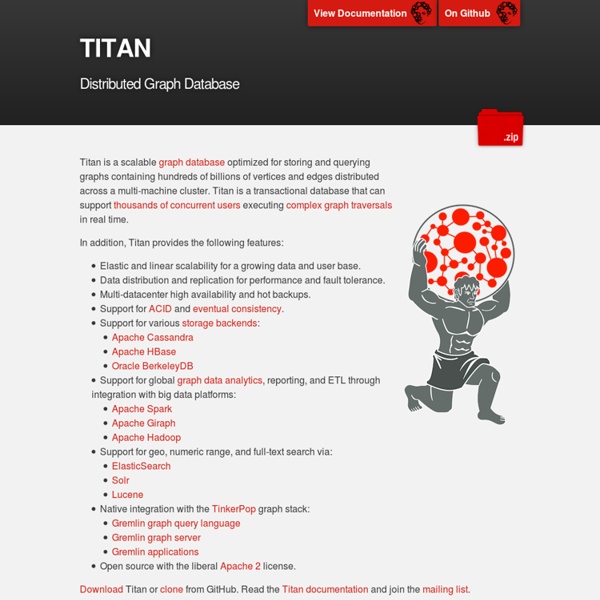Titan: Distributed Graph Database
Titan is a scalable graph database optimized for storing and querying graphs containing hundreds of billions of vertices and edges distributed across a multi-machine cluster. Titan is a transactional database that can support thousands of concurrent users executing complex graph traversals in real time. In addition, Titan provides the following features: Download Titan or clone from GitHub. <dependency><groupId>com.thinkaurelius.titan</groupId><artifactId>titan-core</artifactId><version>1.0.0</version></dependency><! // who is hercules' grandfather? Continue with the Getting Started with Titan guide for a step-by-step introduction.
RDF 1.1 Concepts and Abstract Syntax
Abstract The Resource Description Framework (RDF) is a framework for representing information in the Web. This document defines an abstract syntax (a data model) which serves to link all RDF-based languages and specifications. The abstract syntax has two key data structures: RDF graphs are sets of subject-predicate-object triples, where the elements may be IRIs, blank nodes, or datatyped literals. Status of This Document This section describes the status of this document at the time of its publication. This document is part of the RDF 1.1 document suite. This document was published by the RDF Working Group as a Recommendation. This document has been reviewed by W3C Members, by software developers, and by other W3C groups and interested parties, and is endorsed by the Director as a W3C Recommendation. This document was produced by a group operating under the 5 February 2004 W3C Patent Policy. Table of Contents 1. This section is non-normative. 1.1 Graph-based Data Model Any IRI or literal .
The Open Graph protocol
GraphDB | Semantic Graph Database
Knowledge Base of Relational and NoSQL Database Management Systems
Ontotext
Ontotext is a Bulgarian software company headquartered in Sofia. It is the semantic technology branch of Sirma Group. Its main domain of activity is the development of software products and solutions based on the Semantic Web languages and standards, in particular RDF, OWL and SPARQL. Co-developer[edit] Research projects[edit] The company has been involved in over 30 research projects in the European Framework Programmes in the domains of Semantic Web, Linked Data, Open Data and Text mining Commercial products[edit] External links[edit]
Related:
Related:



